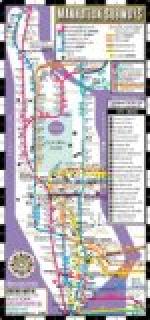[Sidenote: Emergency Signal System and Provision for Cutting Off Power from Contact Rail]
In the booth of each ticket seller and at every manhole along the west side of the subway and its branches is placed a glass-covered box of the kind generally used in large American cities for fire alarm purposes. In case of accident in the subway which may render it desirable to cut off power from the contact rails, this result can be accomplished by breaking the glass front of the emergency box and pulling the hook provided. Special emergency circuits are so arranged that pulling the hook will instantly open all the circuit-breakers at adjacent sub-stations through which the contact rails in the section affected receive their supply of power. It will also instantly report the location of the trouble, annunciator gongs being located in the sub-stations from which power is supplied to the section, in the train dispatchers’ offices and in the office of the General Superintendent, instantly intimating the number of the box which has been pulled. Automatic recording devices in train dispatchers’ offices and in the office of the General Superintendent also note the number of the box pulled.
The photograph on page 120 shows a typical fire alarm box.
CHAPTER VIII
ROLLING STOCK—CARS, TRUCKS, ETC.
The determination of the builders of the road to improve upon the best devices known in electrical railroading and to provide an equipment unequaled on any interurban line is nowhere better illustrated than in the careful study given to the types of cars and trucks used on other lines before a selection was made of those to be employed on the subway.
All of the existing rapid transit railways in this country, and many of those abroad, were visited and the different patterns of cars in use were considered in this investigation, which included a study of the relative advantages of long and short cars, single and multiple side entrance cars and end entrance cars, and all of the other varieties which have been adopted for rapid transit service abroad and at home.
The service requirement of the New York subway introduces a number of unprecedented conditions, and required a complete redesign of all the existing models. The general considerations to be met included the following:
High schedule speeds with frequent stops.
Maximum carrying capacity for the subway, especially at times of rush hours, morning and evening.
Maximum strength combined with smallest permissible weight.
Adoption of all precautions calculated to reduce possibility of damage from either the electric circuit or from collisions.
The clearance and length of the local station platforms limited the length of trains, and tunnel clearances the length and width and height of the cars.




